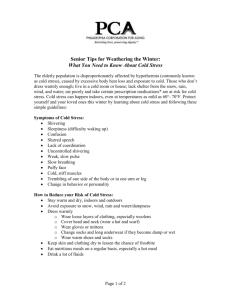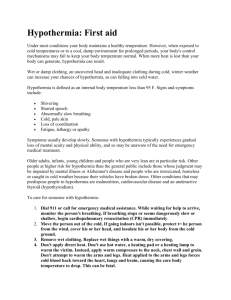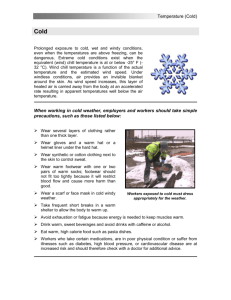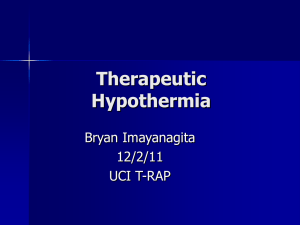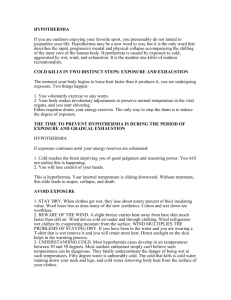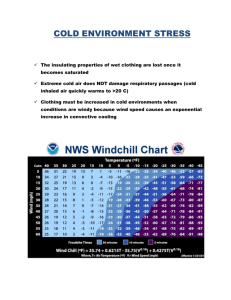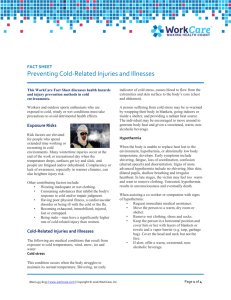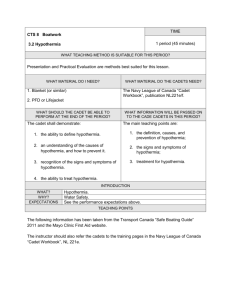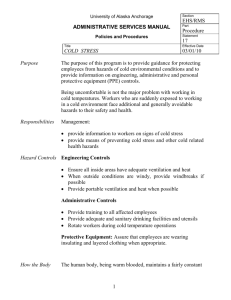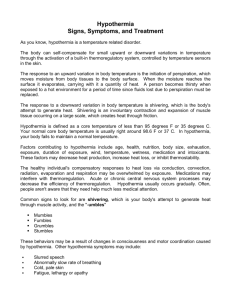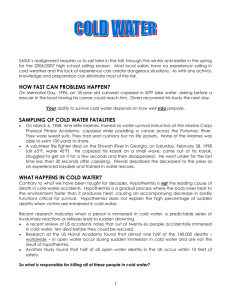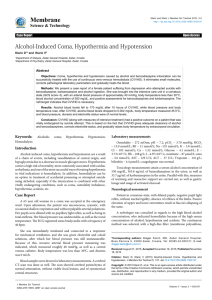Stay Warm, Dry and Safe This Winter
advertisement
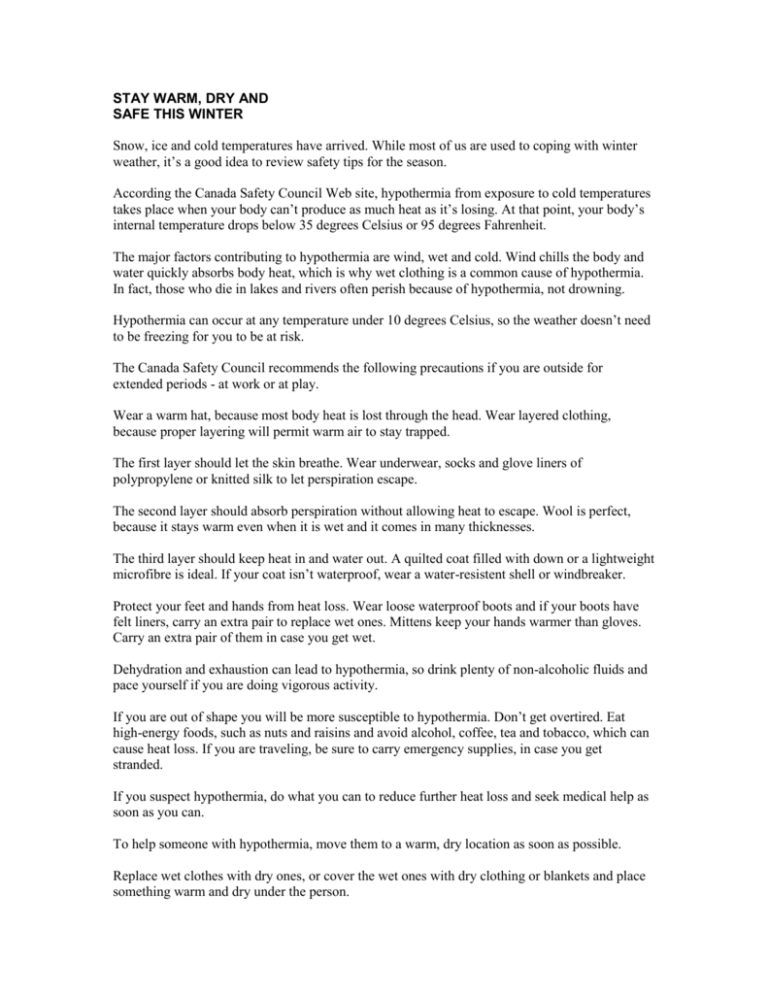
STAY WARM, DRY AND SAFE THIS WINTER Snow, ice and cold temperatures have arrived. While most of us are used to coping with winter weather, it’s a good idea to review safety tips for the season. According the Canada Safety Council Web site, hypothermia from exposure to cold temperatures takes place when your body can’t produce as much heat as it’s losing. At that point, your body’s internal temperature drops below 35 degrees Celsius or 95 degrees Fahrenheit. The major factors contributing to hypothermia are wind, wet and cold. Wind chills the body and water quickly absorbs body heat, which is why wet clothing is a common cause of hypothermia. In fact, those who die in lakes and rivers often perish because of hypothermia, not drowning. Hypothermia can occur at any temperature under 10 degrees Celsius, so the weather doesn’t need to be freezing for you to be at risk. The Canada Safety Council recommends the following precautions if you are outside for extended periods - at work or at play. Wear a warm hat, because most body heat is lost through the head. Wear layered clothing, because proper layering will permit warm air to stay trapped. The first layer should let the skin breathe. Wear underwear, socks and glove liners of polypropylene or knitted silk to let perspiration escape. The second layer should absorb perspiration without allowing heat to escape. Wool is perfect, because it stays warm even when it is wet and it comes in many thicknesses. The third layer should keep heat in and water out. A quilted coat filled with down or a lightweight microfibre is ideal. If your coat isn’t waterproof, wear a water-resistent shell or windbreaker. Protect your feet and hands from heat loss. Wear loose waterproof boots and if your boots have felt liners, carry an extra pair to replace wet ones. Mittens keep your hands warmer than gloves. Carry an extra pair of them in case you get wet. Dehydration and exhaustion can lead to hypothermia, so drink plenty of non-alcoholic fluids and pace yourself if you are doing vigorous activity. If you are out of shape you will be more susceptible to hypothermia. Don’t get overtired. Eat high-energy foods, such as nuts and raisins and avoid alcohol, coffee, tea and tobacco, which can cause heat loss. If you are traveling, be sure to carry emergency supplies, in case you get stranded. If you suspect hypothermia, do what you can to reduce further heat loss and seek medical help as soon as you can. To help someone with hypothermia, move them to a warm, dry location as soon as possible. Replace wet clothes with dry ones, or cover the wet ones with dry clothing or blankets and place something warm and dry under the person. Give a conscious person a warm drink, but avoid alcohol and caffeine. If the person is unconscious, continue to try to warm them, even if can’t detect a heartbeat, as severe hypothermia can be mistaken for death. For more winter safety tips, visit the Canada Safety Council Web site at www.safety-council.org.
